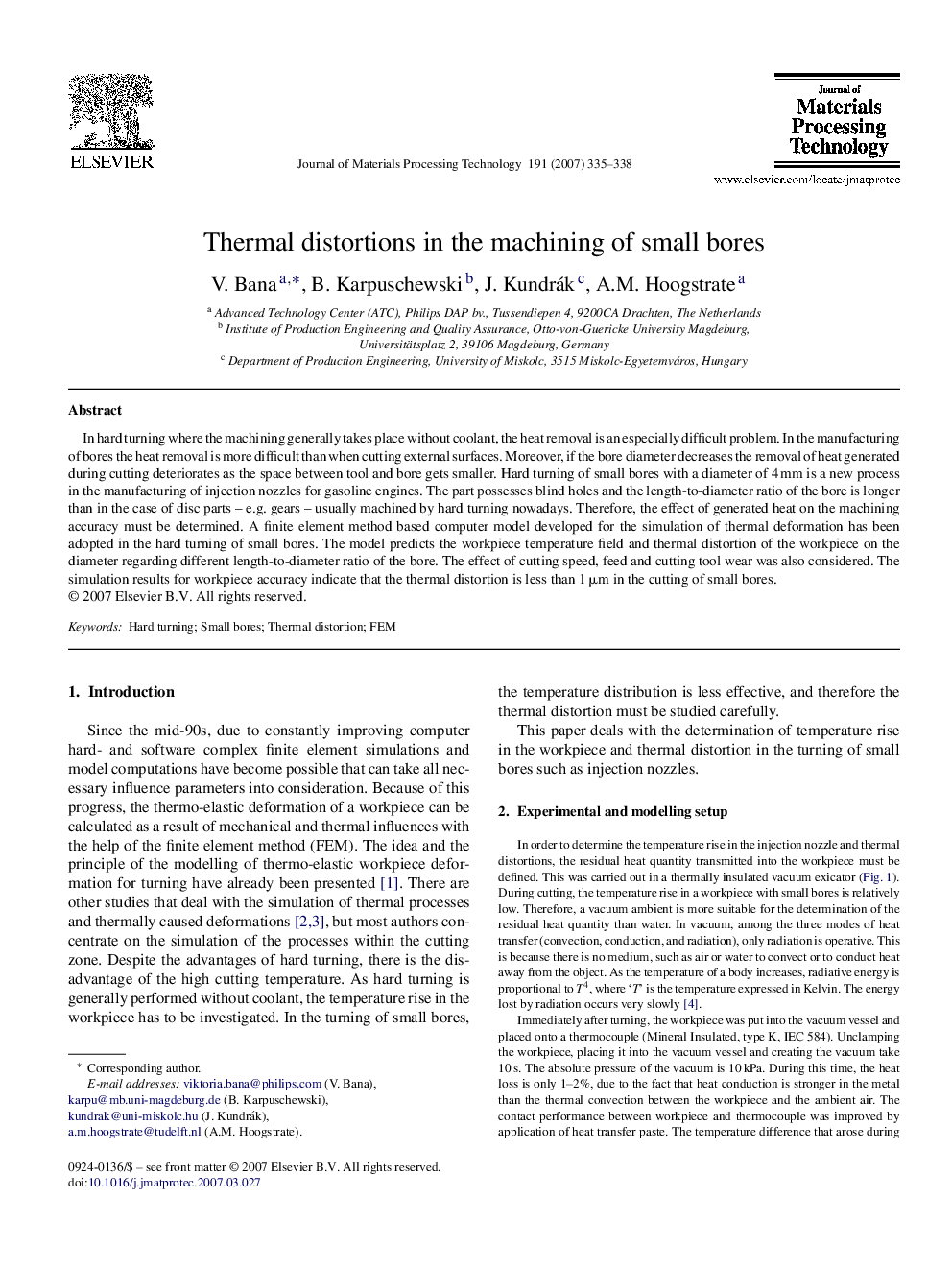| Article ID | Journal | Published Year | Pages | File Type |
|---|---|---|---|---|
| 793973 | Journal of Materials Processing Technology | 2007 | 4 Pages |
In hard turning where the machining generally takes place without coolant, the heat removal is an especially difficult problem. In the manufacturing of bores the heat removal is more difficult than when cutting external surfaces. Moreover, if the bore diameter decreases the removal of heat generated during cutting deteriorates as the space between tool and bore gets smaller. Hard turning of small bores with a diameter of 4 mm is a new process in the manufacturing of injection nozzles for gasoline engines. The part possesses blind holes and the length-to-diameter ratio of the bore is longer than in the case of disc parts – e.g. gears – usually machined by hard turning nowadays. Therefore, the effect of generated heat on the machining accuracy must be determined. A finite element method based computer model developed for the simulation of thermal deformation has been adopted in the hard turning of small bores. The model predicts the workpiece temperature field and thermal distortion of the workpiece on the diameter regarding different length-to-diameter ratio of the bore. The effect of cutting speed, feed and cutting tool wear was also considered. The simulation results for workpiece accuracy indicate that the thermal distortion is less than 1 μm in the cutting of small bores.
